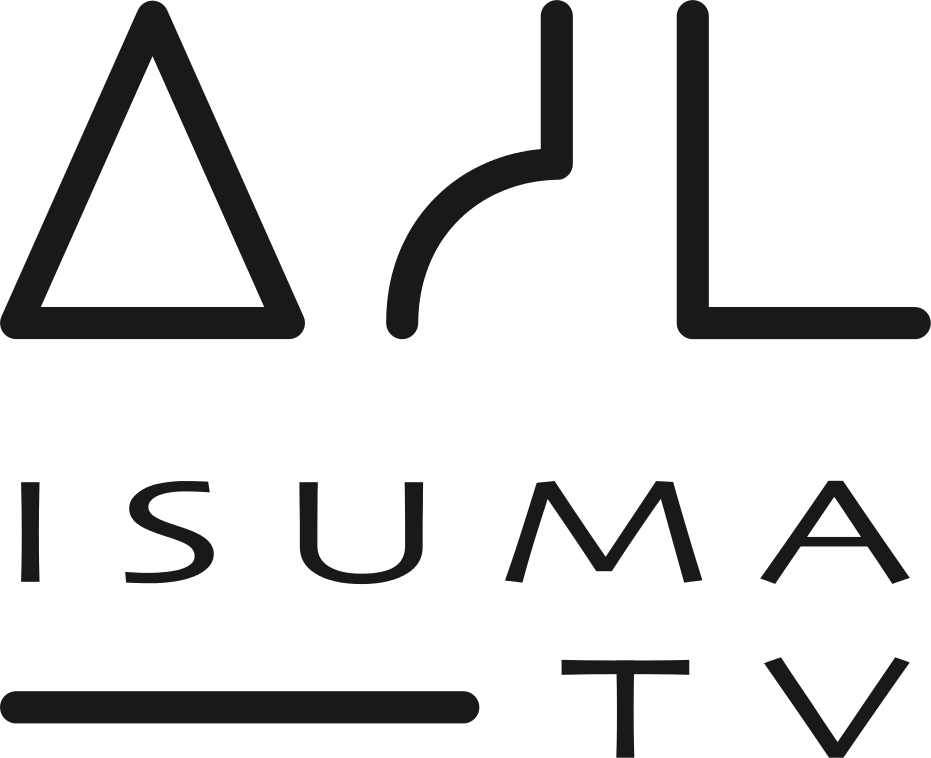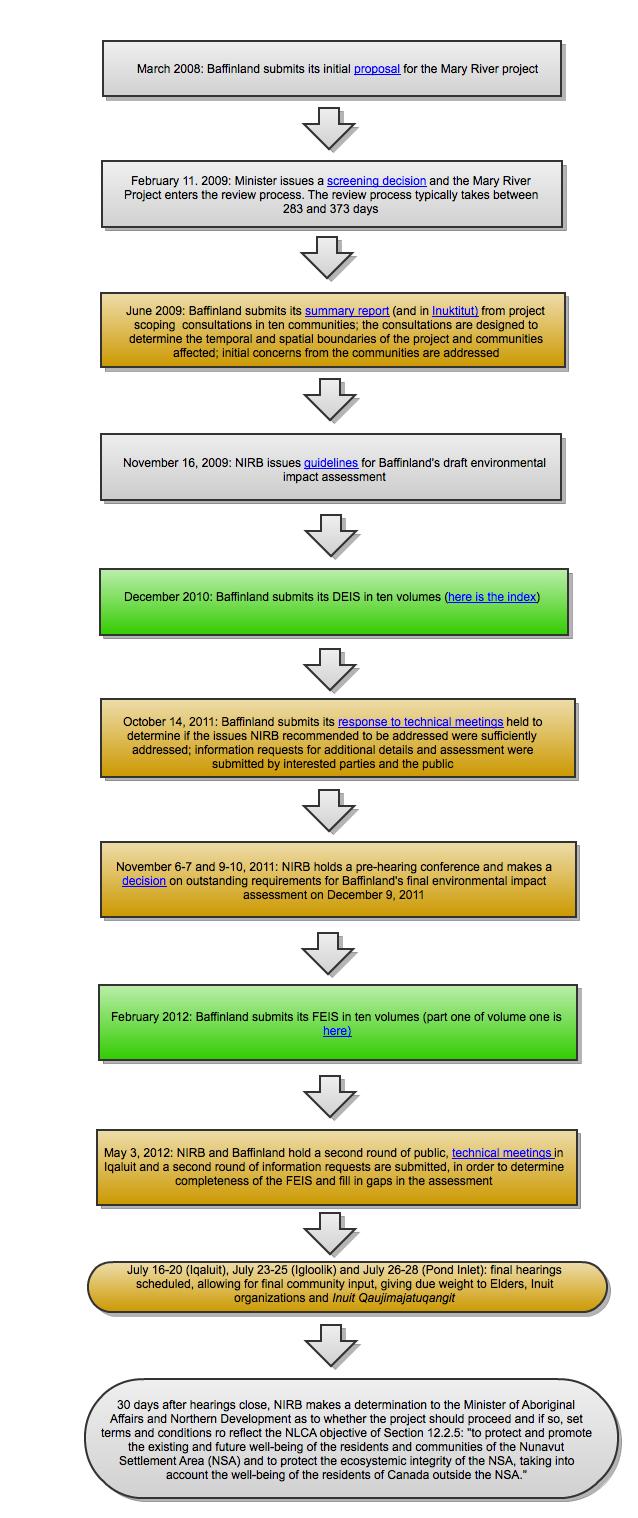The NIRB Process
“NIRB operates under the principle that public participation is an important element of an open, honest and balanced review process. Effective public participation strengthens the quality of the review process and helps to avoid potentialmisunderstandings and conflict. NIRB has a role to ensure that affected communities are aware of the project and its potential environmental impacts.”—Guide to the Nunavut Impact Review Board
WHAT IS THE NUNAVUT IMPACT REVIEW BOARD (NIRB)?
NIRB was developed in 1996 to encourage development of Nunavut’s natural resources responsibly, with active participation of Inuit, and according to Inuit traditional principles of Inuit Qaujimajatuqangit alongside Southern scientific research.
It is a development co-management board, guided by Section 12 the Nunavut Land Claims Agreement (NLCA), that works alongside the government of Nunavut, but independently of the government.
NIRB screens development proposals to determine whether environmental and socioeconomic reviews are required, and if so, to guide and monitor the review process to ensure it complies with Section 12 of the NLCA. Ultimately, NIRB also makes a recommendation to the Minister of Aboriginal Affairs and Northern Development Canada as to whether a development project should be approved to proceed, whether it requires further review or whether a project proposal should be abandoned altogether.
Once a project is approved by the Minister, it's NIRB's job to monitor a project to ensure it complies with the terms and conditions set by the Minister, NIRB, and regional permitting, leasing and licensing authorities.
It makes decision on not only Inuit-owned lands, but also Crown lands and the waters within the Nunavut Settlement Area, and ensures that the interests of Nunavummiut and Canadians are protected throughout the life of a development project.
NIRB looks at direct effects, indirect effects and cumulative effects of a development project over the life of the project.
The Board is made up of nine members, including one chairperson, half of which must be Inuit representatives, nominated and appointed by Inuit organizations and the other half appointed by the federal and territorial governments.
WHAT IS THE TIMELINE FOR THE BAFFINLAND MARY RIVER PROJECT?
IF THE PROJECT IS APPROVED:
The Minister may accept NIRB’s report, reject its determination or request further assessment.
A project certificate is issued: this includes NIRB’s and the Minister’s terms and conditions, and NIRB may reconsider those terms and conditions at any point if the circumstances or technology used in the project change, or if the terms and conditions are not working.
HOW CAN THE PUBLIC PARTICIPATE IN THE REVIEW PROCESS?
Part of NIRB’s mandate is to ensure that a) the public is informed about and participant in the review process and b) the project proponent (Baffinland) consults with the public at all stages of the process, showing how public consultation affected its decisions and assessments.
Hearings should be open and advertised at least two weeks in advance through posters, ads in regional and territorial newspapers and radio announcements.
Documents and reports must be presented in English and Inuktitut, in clear, nontechnical language, in a readable length and publicly available.
“Consultation leads to action:” the corporation should be available to genuinely listen to community concerns. Not every suggestion in a consultation should be implemented, but the corporation must be able to show where it has taken community input into account in its FEIS.
“[Public consultation] is intended to assist both the communities and the Proponent to understand what effects a project will have on potentially-affected communities. It also helps to avoid potential misunderstandings and conflict with the public, which could potentially affect the timeframe for the development of the project.” –A Proponent’s Guide to Conducting Public Consultation for the NIRB Environmental Assessment Process


















